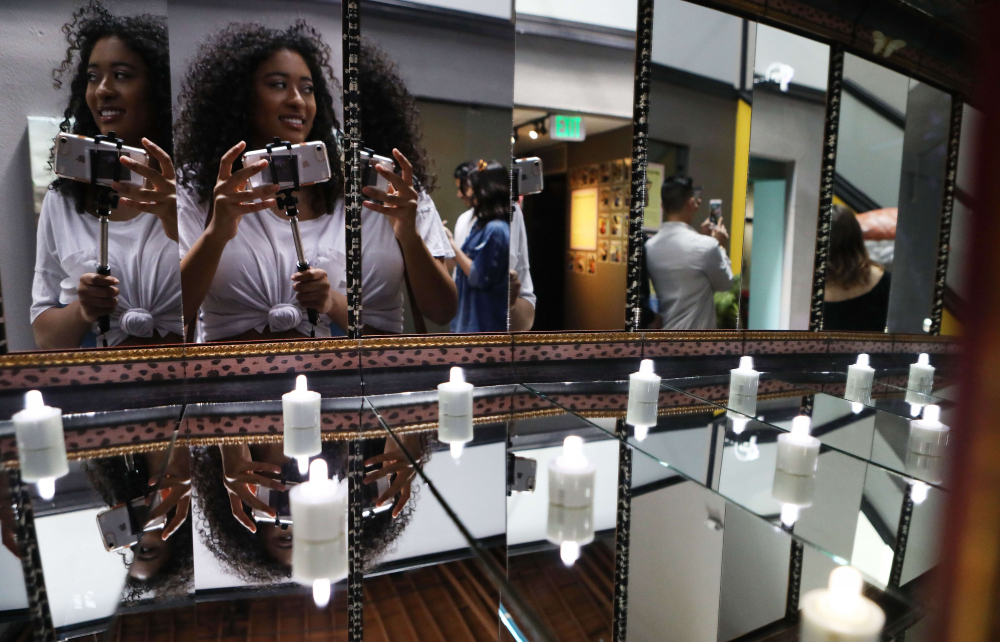The newly-opened California Museum of Selfies places an ostentatious pinpoint on the timeline of the digital age, marking the moment where the selfie is treated with artistic respect. This exhibit allows visitors to explore the selfie right back to its 40,000 year-old roots and contains primarily interactive instalments that reinforce co-founder Tommy Hanton’s view that art ‘can be for everyone’, a principle that he believes the selfie champions. But is the museum’s emphasis on accessibility a testimony to the lack of skill required to take a selfie? Does art need to be difficult to
produce in order to be respected as art? And on a more polemic level, does exhibiting selfies in this manner demean the value of ‘real’ portraiture in photography, insulting the work of trained fine art photographers? What constitutes art has long been difficult to identify, and the California Museum of Selfies certainly adds a new dimension to the dispute.

It would be interesting to see how the museum differentiates self-portrait from a selfie. Whilst it is difficult to avoid generalisations – everyone has their own taste – there’s no significant debate conversing the legitimacy of the self-portrait in notable galleries around the world. The style’s capability to capture identity, truth, self-perception and, in some cases, narcissism, is precisely what defines the wonder of infamous works like Frida Kahlo’s, now iconic image of feminism, Self-Portrait with Thorn Necklace and Hummingbird. Portraiture such as this did not become famous for the creator’s painting skills, but for its nuanced ability to argumentatively self-represent.
So what makes the selfie any different?
Perhaps, as the California Museum of Selfies emphasises, it’s the accessibility of the style. Not everyone has the time, money and fine motor skills to draw or paint a self-portrait, whilst almost everyone has a phone with a reasonable quality front camera, ergo everyone can take a selfie. The idea that ‘real’ art requires high skill level is not rare; visiting a modern art gall
ery often invites a degree of scepticism as we wonder how a few blocks of colour on a page somehow constitute a piece worth millions (Matisse’s The Snail). But in this case, the “anyone could do that” criticism isn’t quite correct because nobody else thought to do it. The difference with selfies is that the process of thought, conceiving the final product before it is made, is non-existent. Selfies are the only form of art that is truly spontaneous.

There are many ways to look at this spontaneity: for one, the generally unprepared for nature of the image captures an element of truth not easily achievable in other forms of portraiture. Think of the classic awkward grin that comes with snapping a picture with a celebrity, something difficult to imitate without the selfie’s instantaneous results. However, this expectation of spontaneity adds a new element of deception when the selfie has, in reality, been heavily prepared for. Changes to lighting and angles allow the photographer/model to experiment with changes in their expression and pose until the perfect image is shot, it’s easy to forget that an effortless-looking photo could have taken hours to prepare for and be one decent image out of hundreds that did not make the cut.
It is this ability to reflect or falsify truth that makes selfies such a complex and thought-provoking art. Now marketed with shots of iPhone users using Animoji to turn video selfies into singing emojis that can copy our facial expressions, the chief company that orchestrates our selfies joins the Californian museum in celebrating these snaps as a light-hearted and accessible form of photography. By finding more poignant, expressionist ways to channel the selfie phenomenon, are we cheating Apple’s system?
Katherine Corcoran
(Image courtesy of AFP)

